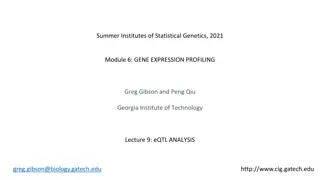
Introduction to PLINK Coding
Explore the basics of PLINK coding with examples on handling cases, controls, and missing data. Learn how to use PLINK for genetic association studies efficiently. Access PLINK versions 1, 1.9, and 2.0 for advanced analysis.
Download Presentation

Please find below an Image/Link to download the presentation.
The content on the website is provided AS IS for your information and personal use only. It may not be sold, licensed, or shared on other websites without obtaining consent from the author. If you encounter any issues during the download, it is possible that the publisher has removed the file from their server.
You are allowed to download the files provided on this website for personal or commercial use, subject to the condition that they are used lawfully. All files are the property of their respective owners.
The content on the website is provided AS IS for your information and personal use only. It may not be sold, licensed, or shared on other websites without obtaining consent from the author.
E N D
Presentation Transcript
Introduction to Introduction to PLINK PLINK Luc a Colodro Conde and Katrina Grasby
Marees et al. Int J Methods Psychiatr Res. 2018 Jun; 27(2): e1608.
Example: plink --file {your_file} --assoc --out {your_output_file} Note default Plink coding Male = 1, Female = 2 Control = 1, Case = 2 Missing = -9, 0, non numeric Note the code for cases, controls, and missing data can be changed using different flags.
PLINK PLINK 1: http://zzz.bwh.harvard.edu/plink PLINK 1.9: https://www.cog-genomics.org/plink/1.9/ PLINK 2.0: https://www.cog-genomics.org/plink/2.0/







